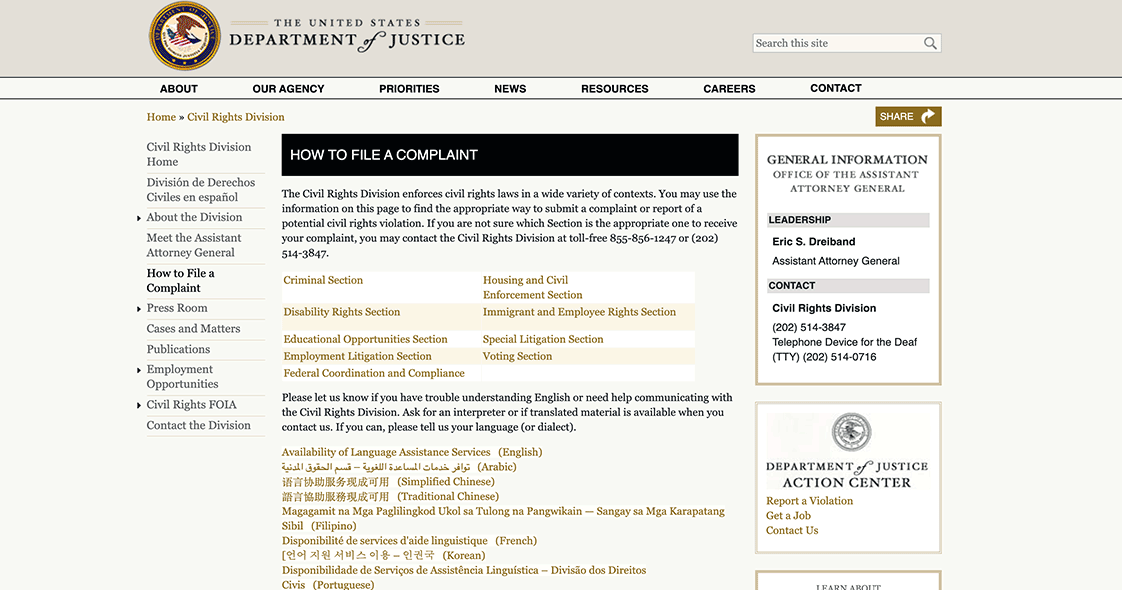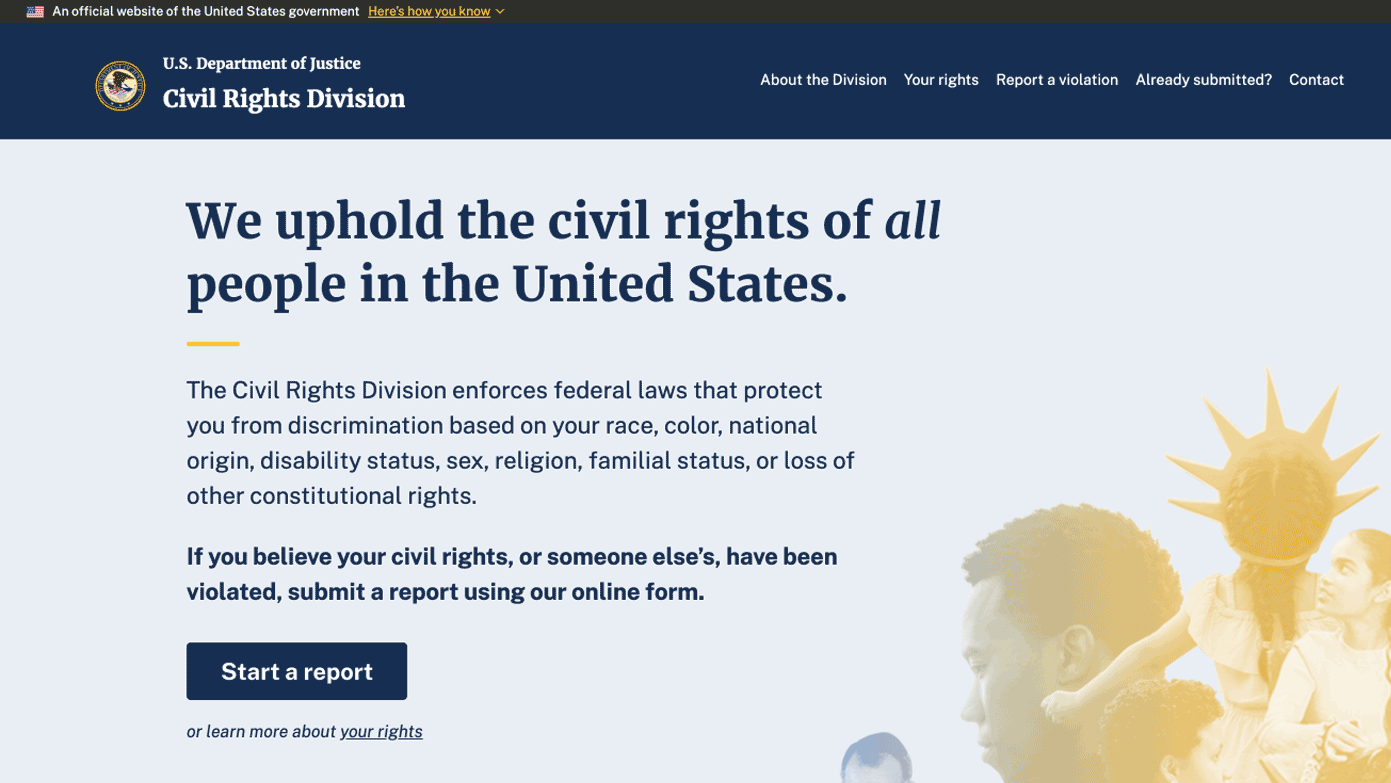On Feb. 7, 1961, James Meredith submitted a letter to the Department of Justice (DOJ) asking for the Department’s support in his admission to the University of Mississippi by enforcing federal desegregation laws not being respected by the state. Through the combined efforts of the local NAACP, the Department of Justice, and the US Supreme Court, Meredith eventually became the first African-American student admitted to the university.

Since 1961, the Department of Justice has come a long way in making it easier for people to report discrimination or a violation of rights. Now, with the help of 18F, they have transformed how the Civil Rights Division receives and processes civil rights reports using modern technology and user experience design practices.
Today, the Civil Rights Division estimates that they receive over 100,000 reports per year sent by physical letter, email, phone, as well as some web submissions. These reports, typically sent from the nation’s most vulnerable populations, help the Civil Rights Division enforce over 30 federal statutes that protect the civil and constitutional rights of everyone living in the United States, spanning housing, employment, voting rights and many more. For example, someone might report:
- not receiving the disability accommodations they need from a store,
- suffering sexual harassment by their landlord,
- having arbitrary and unreasonable restrictions placed on their religious practice in prison, or
- being denied service in a restaurant based on race.
The Division also receives reports of potential voting rights violations, particularly during election season.

Up until now, the experience of filing a report was confusing and inconsistent for the public. The Civil Rights Division is a complex organization with several specialized units (or “sections”). This complexity was confusing for some victims of civil rights violations. A victim reporting a violation had to pick among dozens of possible reporting pathways. Without clear guidance and expectation setting, many people submitted reports that required extensive follow-up to collect missing information, or submitted reports that fell outside the purview of the Division altogether.
In order to be more responsive to the public’s changing communication needs and the increased reporting volume,the Civil Rights Division, in close collaboration with 18F, has launched a user-friendly online submission experience at civilrights.justice.gov that transforms the way the Division collects, sorts, and responds to civil rights reports.

We worked with stakeholders from the Division to craft these design principles for the new experience, which subsequent designs, prototypes, and builds were tested against:
- Informative, but clear and concise
- Intuitive and prompts a narrative
- Helpful and honest
- Forward-thinking and relevant
Backed with in-depth usability research, this new user-centered online reporting experience uses intuitive design and plain language to guide users through the process of filing a report. The public will find it easier to tell their story, submit their report, and receive guidance on what to expect next. The new form is designed to help the Division receive the information they need to process reports efficiently. Based on users’ answers, the form routes reports to the most appropriate section of the Division.
For Division staff, this new experience creates a more consistent, collaborative, and transparent process. It allows staff to easily review, sort, and redirect reports to the appropriate team for analysis. This saves time and energy, freeing up more capacity for the Division to focus on advancing civil rights.

The core development team across the Civil Rights Division and 18F is still iterating on the experience. After launching for internal use and as a ‘beta’ experience, the team is announcing this website more widely so we can continue to improve and adapt with more real reports and feedback from the general public.
We plan to publish a series of blog posts that dive deeper into key factors that made this engagement and product such a success, including:
- organization-wide Agile transformation
- human-centered design
- working with an empowered Product Owner
- and more…
Stay tuned!
18F launch team: Heather Battaglia, Lalitha Jonnalagadda, Joe Krzystan, Olesya Minina, Uchenna Moka-Solana, Aviva Oskow, Jacklynn Pham, James Tranovich, Lindsay Young
And thank you to the many people who helped along the way: Elizabeth Ayer, Adam Biaganti, Malaika Carpenter, Rhys Fureigh, Ryan Johnson, Nikki Lee, Dan Perkins, Peter Rowland, Alex Soble, Julie Strothman, Nikki Zeichner, Erin Zimmer Strenio, and the many others who provided feedback

